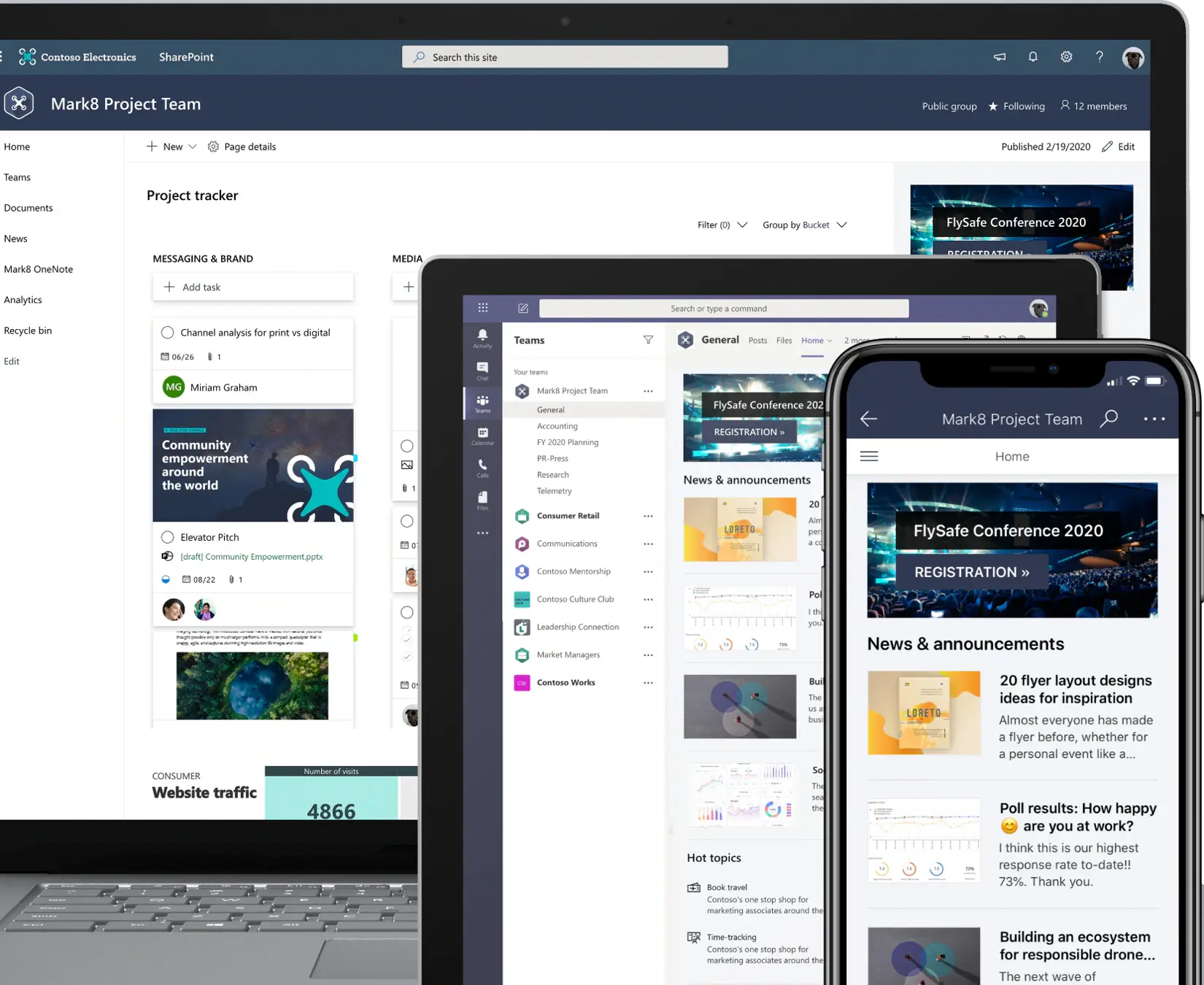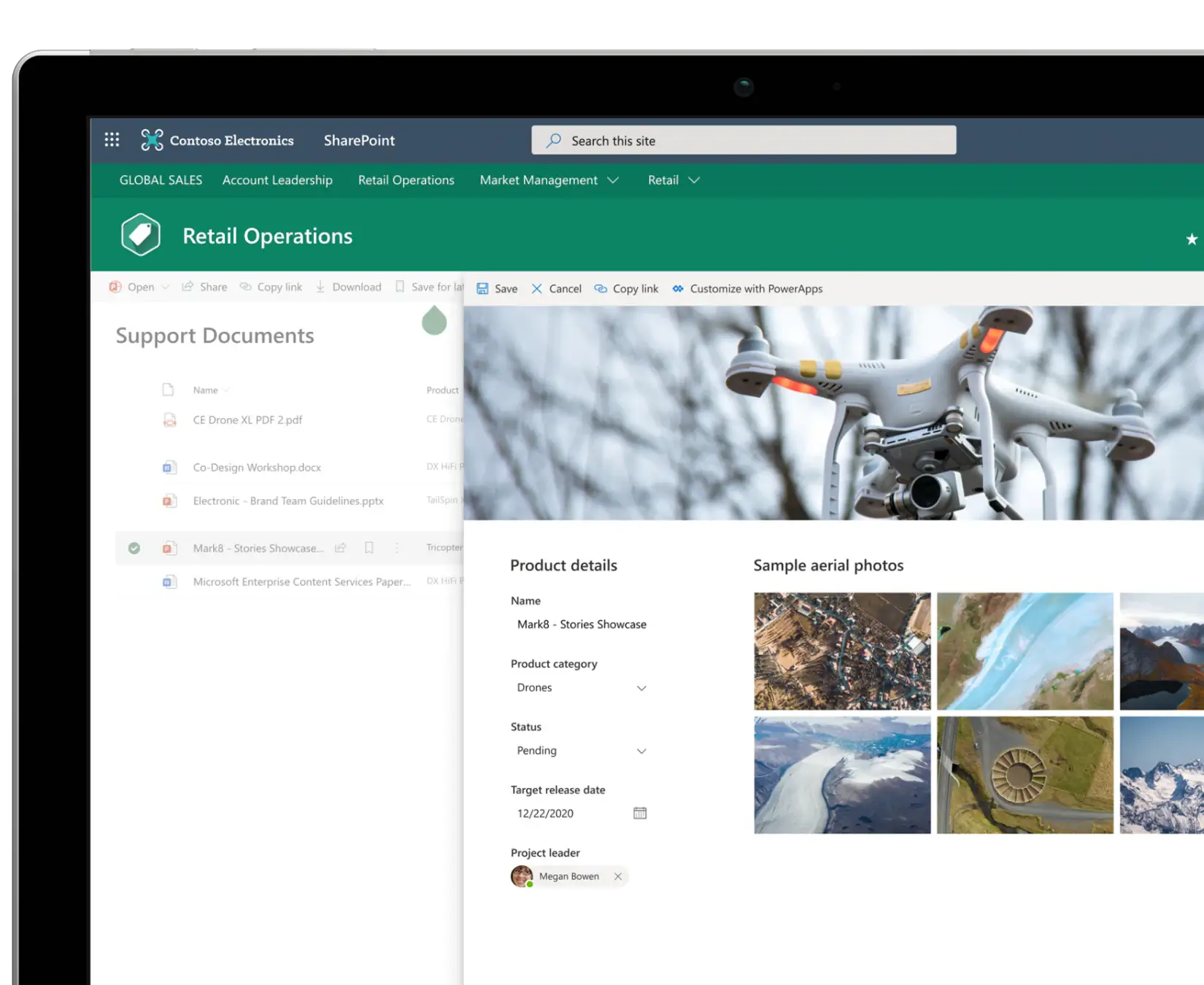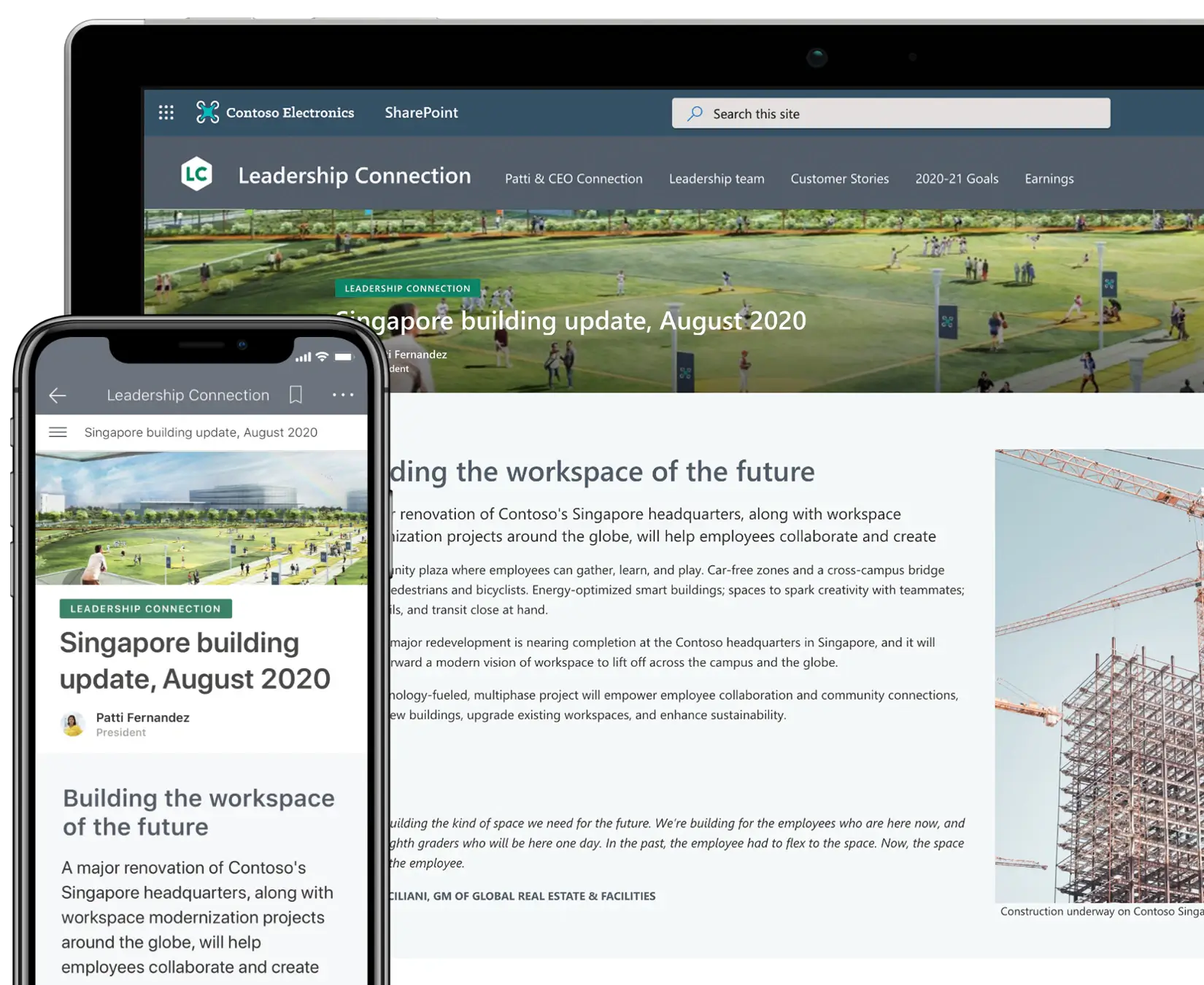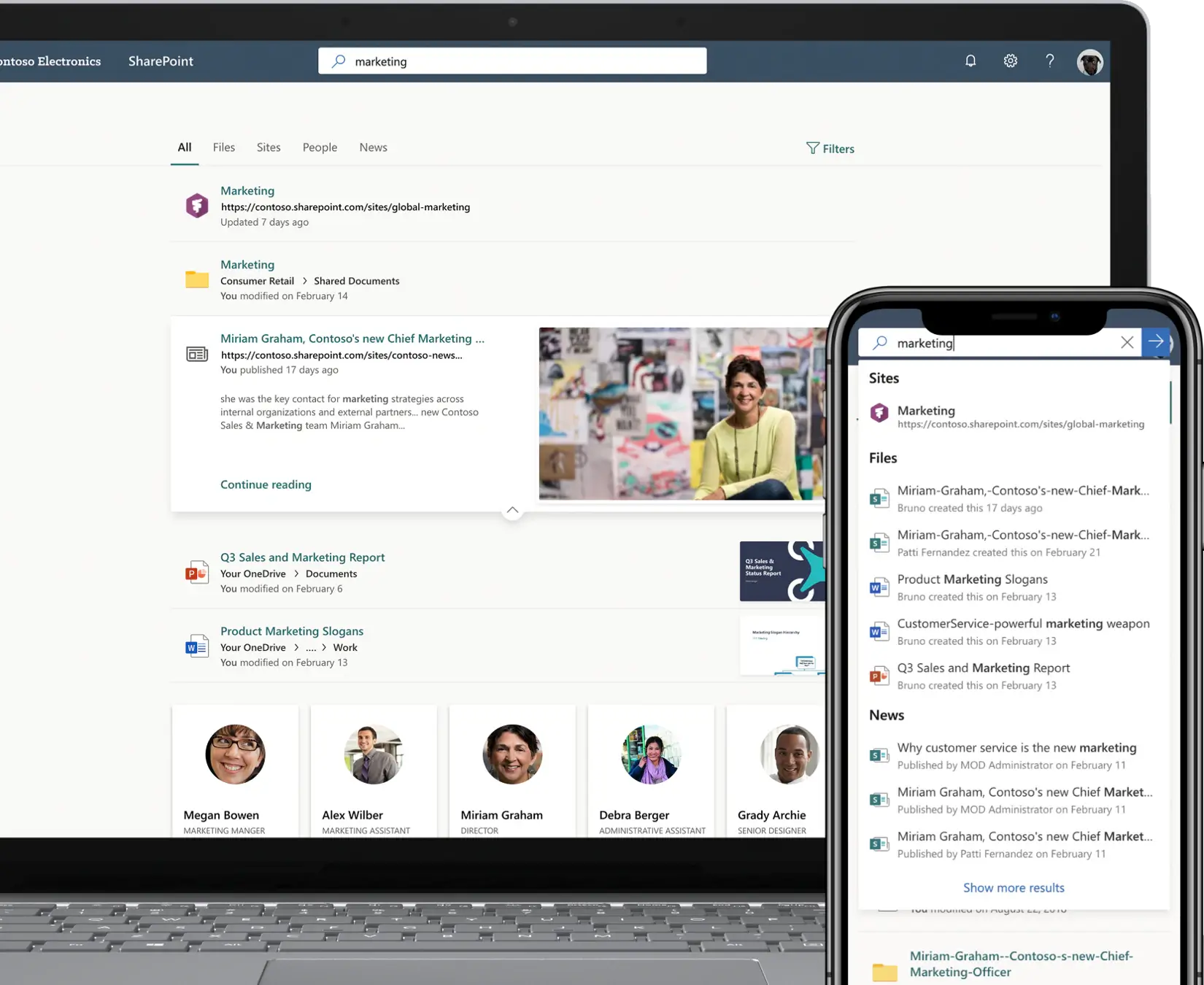In recent years, Contract Lifecycle Management (CLM) has emerged as a software category that aims to provide organizations with a dedicated, comprehensive piece of software to manage all of their contract management processes. The space is booming. According to data from PitchBook, in 2021, $436.8M of venture capital was invested in the CLM space across 22 deals—up 63% vs. the year prior.

Though CLMs are growing in adoption, they serve a relatively small number of businesses compared to Microsoft’s SharePoint. Based on Gartner figures, CLMs serve approximately 10,000 customers today. There are over 200 million active users of SharePoint, across 200,000 organizations worldwide. SharePoint is very versatile software, and obviously much of this use is on non-CLM tasks. In recent months, we have devoted a lot of effort to finding out how organizations manage their contracts. Our most striking finding has been how many organizations use SharePoint as their contract management system. Our sense is that SharePoint is the most heavily used system for managing contracts, by a LOT.
Note that in this piece (and in business operations in general), we have made a distinction between “CLM” software (which we view as a purpose-built piece of software for managing contracts from creation through negotiation to post-signature) and “contract management.” We categorize SharePoint as non-CLM contract management software, even though, with some tweaks, SharePoint can serve as a fine CLM.
Based on marketing hype, one might imagine that sophisticated companies use a CLM and organizations that don’t use a CLM don’t really care about contract management. We’ve found this not to be the case. In fact, we’ve seen very sophisticated organizations manage their contracts using SharePoint. For example, one large auto manufacturer we spoke to has some 100 different contract management databases in use across their organization. These include at least one market-leading CLM. But more of these databases are SharePoint than anything else. Our sense is that this is quite typical.
The reality is, all businesses of all sizes in the world have some kind of processes relating to contracts and related operations. Those processes may be utterly unstructured at one end of the spectrum (and typically also entirely manual), or, at the other end of the spectrum, highly-structured and defined. In the structured/defined case, some may feature some elements of IT automation. (Note that it’s possible to have very defined contracting processes and almost no IT automation for them—and for that to work fine and make sense.) Everybody has some kind of processes somewhere on that spectrum, and at the more process-defined end of the spectrum they may also have some IT automation (but not necessarily.) Some parts of that automation might be appropriate for a CLM solution, while others will merit other IT automation solutions. That is the way the business universe is and always has been.
Purpose-built CLMs can be very helpful software for some organizations. But they are not the only way to solve contract management problems. What follows are ten key reasons why SharePoint is not just a viable, but highly effective system for contract management—and why it could be the system to maintain and build on as you look to evolve and improve your contract management practices.
Implementation
1. SharePoint is already set-up and working in your IT environment
SharePoint is in your IT environment and—very likely—your contracts are already being stored in it, by some part of your organization. It fits in your enterprise IT architecture. If your organization was to implement a CLM, you would already be many months behind this point, considering the time and effort it would take your IT teams to conduct security and compliance reviews and generally get familiar with the system. Also, your IT team already likely knows how to support and modify SharePoint.
2. With SharePoint, little to no data migration is needed
Migrating data to a new software system can be a massive undertaking. A migration plan and processes need to be defined, data quality needs to be assessed pre and post migration, and the execution itself needs to be tested. Depending on the volume of data or overall complexity of the migration, your organization may need to hire specialists to manage it, which can become costly in itself. It’s kind of like moving. You need to plan for which items move, what stays and coordinate when to do it so it doesn’t disrupt your life too much. You need to find and organize the right boxes to pack everything in. You’ll likely need to hire some help and be okay with things breaking along the way. Moving houses or document repositories is something most people would like to avoid if they could.
3. Using SharePoint significantly reduces change management challenges
One of the hardest things about adopting any new piece of software is getting people to use it. We recently heard of one technology company who had bought a new CLM but Legal wouldn’t let go of their old CLM, so instead of migrating, the company had a convoluted contracting process running across multiple applications. Change management is hard. New software implementations frequently fail because of the difficulty of getting people who are perfectly happy doing things one way to get them to do it another. If we stay on the moving analogy a little longer, change management can represent all the new things you have to learn and do after you’ve moved—what’s the best grocery store to shop at, what’s the best route to avoid traffic coming home, needing to call all your service providers to update your contact info, getting oriented at your kid’s new school … we could go on. These can be tough things for people to deal with or adapt to because we naturally get set in the routines we know. You don’t have to fight it. If your organization is already using SharePoint as a contract management system, consider whether you can enhance rather than replace it.
4. SharePoint is more cost-effective
One reason CLMs have been attracting so much venture capital funding is that these systems can be expensive. Implementation and change management costs can push the tab up even further. SharePoint, on the other hand, is very attractively priced. Depending on the Microsoft plan you are on, it may be basically free to use it as your contract repository. And, if you decide to enhance your SharePoint to make it even better for contract management, it could be much cheaper than starting from scratch with a purpose-built CLM, partially because you may be able to only buy the features you need (e.g., contracts AI) as opposed to having to sign up for an entire suite which you only need some of.
Flexibility
5. Business units own and run their own (often unique) contract management processes, which can be challenging for purpose-built software to support
Every department in an organization can have different contract management processes. These different needs occur both by function (legal, marketing, business operations, whatever) and by business org (e.g., Mexico division, home mortgages unit, corporate credit unit, live events group). Where an in-house legal team will conduct thorough contract reviews on a wide range of templates and formats, a sales or sales operations team may only be concerned in reviewing small sets of clauses and consistently on their org’s paper. An operations team might care more about data privacy, data usage/transfer restrictions, or service levels. Finance could care about price increases and revenue recognition. A small bank’s consumer-focused loans (like mortgages) could be on unmodified bank paper, but their external software licenses might all be on vendor paper. Therefore, each group may have unique processes and require a level of flexibility in the applications and workflows they set up to run effective contract management (for their needs). While we hear of smaller, less-complex organizations running fine with one CLM, we generally hear of large organizations running multiple different contract management systems. And by “multiple,” this sometimes means “over one-hundred.” In our view, a more effective approach for teams looking to improve their respective contract management practices is to think about how software (or a combination of integrated software tools) can support the established processes that are already working, vs. thinking about how a singular software platform might lead and transform all of an organization’s contract practices.

Integrations
6. SharePoint has an extensive set of integrations available
Contracts are part of broader business processes. As such, contract management software needs to integrate well with other systems. While some leading CLMs have tens of integrations, these are dwarfed by those available for SharePoint. There’s a good reason for this: the SharePoint ecosystem is so large, that software developers can reach a far bigger market by developing for it.
7. SharePoint integrates across the Microsoft suite of applications
We just talked about integrations, but Microsoft tools are in such heavy use across organizations today that this set of integrations deserves a special call-out! As SharePoint integrates with other Microsoft applications—such as Word, Excel, Outlook, Dynamics, and Teams—it makes it easy to work with contracts and other documents in a familiar environment, as well as collaborate with others on them. While CLMs also sometimes integrate with Microsoft products and can have collaboration features, SharePoint’s integration with other Microsoft tools may make it easier for users to work together. CLMs likely won’t integrate as seamlessly with your current applications, or may require additional setup or training to do so. SharePoint also integrates with Microsoft’s Power Automate, a low-code/no-code automation tool, which even non-developers can use to manage repetitive tasks.

Extensibility
8. Add-on features can make SharePoint very useful
SharePoint’s integration edge is significant, but it offers a related advantage that’s probably even more significant: SharePoint is a true platform, which third-party developers can build on top of. The vendors of a typical CLM are really the only ones who can enhance that CLM. As a user, you are stuck with how they decide to improve their product. With SharePoint, on the other hand, other vendors can extend SharePoint functionality, and you can license access to add-ins built on top of it. Coupled with SharePoint’s vast advantage in market penetration, this means that there are a lot of SharePoint enhancements to choose from. Zuva, for example, can enable you to add the same high-quality contracts AI that multiple CLMs use into your SharePoint-based contract management repository.
9. SharePoint is highly customizable
SharePoint users don’t need to wait for a vendor or other third party to build them a feature they would like. SharePoint is highly customizable by end users. Users can make changes themselves, they can have their IT departments (or other experts in their business) help them, or they can choose from vast numbers of consultants, at all sorts of different price points.

Community
10. The SharePoint community is super strong
Some CLMs have worked hard to build user communities, with user events, community portals, and focused, capable leaders, But the SharePoint ecosystem is huge and pretty hard to beat. A heavily adopted CLM has 1,500 customers. SharePoint has 200,000. This drives a thriving community of developers, certified experts, local user groups, and support books to help them get the most of the system. For a sense of this, do a search for “sharepoint” on Amazon and marvel at the pages of results of books written to guide users of this piece of enterprise software. Wow.
Summary
It’s important for business people to understand that their current SharePoint investment provides a strong foundation and an advanced path for highly effective contract management. SharePoint is a system that’s designed to support—not dictate—the unique needs of a business unit and the established processes they own and run today. SharePoint’s ability to add on features (which are practically limitless considering SharePoint’s interoperability and supportive community) enables teams to easily evolve their practices.
Are you interested in learning about how you can add contracts AI features to your SharePoint system? At Zuva, we make it dead easy for people to use AI to understand the details of their contracts.
About Zuva
At Zuva, we are focused on making contracts AI that’s dead simple to use. Whether it’s through a connector, as an add-on feature, or by building with our API, it’s really easy to add contract intelligence to your workflow apps.